How to Automate Salesforce Client Onboarding with Agentforce : Mykhailo Radchenko
by: Mykhailo Radchenko
blow post content copied from Salesforce Apps
click here to view original post
### Summary of Salesforce Client Onboarding with Agentforce-Powered Automation **Introduction: The Challenge of Onboarding in Salesforce** Onboarding new customers in Salesforce is often more complicated than it seems. Many companies expect a seamless experience, but the reality is that most tasks are done manually. Teams frequently copy and paste client information across spreadsheets, update records in multiple systems, and pursue signatures via emails. This manual process consumes time and increases the risk of errors, leading to customer frustration. **The Importance of Automation** The onboarding process, especially in critical sectors like banking, can take a long time—up to 100 days in some cases. Agentforce, Salesforce’s AI-driven platform, offers a solution by automating these tasks. Unlike typical AI tools that only provide answers, Agentforce can actively interact within Salesforce to complete onboarding steps efficiently. **How Agentforce Works** Agentforce can transform the onboarding process by automating tasks such as data entry and document handling. When paired with Titan, another solution that manages forms and e-signatures, they create a fully integrated onboarding experience. This integration helps to save time and minimize errors. **Steps to Enable Agentforce** 1. Enable Agentforce in Salesforce. 2. Create your first agent. 3. Define topics and actions for the agent. 4. Test the agent to ensure it works correctly. 5. Deploy and monitor the agent's performance. **Enhancing Onboarding with Titan** Titan provides additional capabilities to streamline onboarding: - **Smart Forms**: Collect information without manual re-entry. - **Document Processing**: Automate document collection and approvals. - **E-signatures**: Facilitate online signing of agreements. - **Self-Service Portals**: Allow customers to manage their onboarding process. **Best Practices for Effective Onboarding Automation** 1. Simplify forms and only ask necessary questions. 2. Keep all processes within Salesforce for ease of tracking. 3. Automate repetitive tasks to reduce workload. 4. Maintain an audit trail for compliance. 5. Enable customer self-service options. 6. Thoroughly test the onboarding process before going live. 7. Continuously train your team and improve your processes. 8. Focus on enhancing the customer experience. ### Conclusion By leveraging Agentforce and Titan, companies can transition from a cumbersome onboarding process to a streamlined, efficient, and customer-friendly experience. This approach not only saves time and reduces errors but also creates a positive first impression for new customers. ### Additional Context Using AI and automation in onboarding helps organizations remain competitive by providing top-notch customer experiences. As digital interactions become the norm, optimizing processes can lead to higher customer satisfaction and retention rates. ### Hashtags for SEO #Salesforce #ClientOnboarding #Automation #Agentforce #Titan #CustomerExperience #AIAutomation #DigitalTransformation #NoCodeSolutions #BusinessEfficiency
Introduction, or Why Salesforce Client Onboarding Demands Agentforce-Powered Automation
Bringing new customers into Salesforce sounds simple, but for most teams, Salesforce client onboarding quickly turns into a challenge. Companies invest in Salesforce, expecting a fast and impressive experience for every new customer. Instead, here’s the reality:
- Most onboarding tasks are still manual: Teams copy-paste client details between spreadsheets, update records in different systems, and chase signatures over email threads. This eats up valuable time that could be spent helping customers.
- Mistakes are common: When the same data is entered multiple times, it’s easy to make mistakes. Important details get lost, customers receive outdated documents, or someone forgets a required step.
- Clients get frustrated: New customers want a smooth, digital experience. Instead, they might be asked for the same information twice, sent non-branded forms to print and sign, or left waiting for status updates.
According to Salesforce, manually entering onboarding data, especially in fields like finance or healthcare, raises the risk of errors so much that it can threaten compliance.
Insight:
For example, in banking, the average onboarding process for a new corporate client, according to McKinsey, can take up to 100 days, with timelines varying significantly depending on the banking products and countries involved.
But there’s good news: automation in Salesforce is entering a new era with Agentforce, Salesforce’s new platform for AI-powered digital Agents. Unlike generic AI tools that only answer questions or generate text, Agentforce Agents can actually take action inside Salesforce. They read data, follow workflows, and complete onboarding steps on their own. This makes them especially valuable in client onboarding, where dozens of small but critical tasks need to be completed quickly and accurately.
Agentforce is capable of completely transforming the onboarding process, especially when paired with platforms like Titan. Titan handles the forms, documents, and e-signatures with powerful no-code automation, while Agentforce’s AI Agents guide customers, check data, and trigger the right next steps. Working together, they create a smooth, fully connected Salesforce onboarding process that saves time and reduces errors.
- The Role of Agentforce in Salesforce Onboarding
- Quick Start Guide: Enabling Agentforce for Smarter Onboarding
- How Titan Can Help Take Client Onboarding to the Next Level
- Agentforce and Titan Work Together for the Best Client Onboarding Experience
- Tips for Better Salesforce Onboarding Automation
- Final Thoughts About Salesforce Onboarding Automation
Ready to move from paperwork and frustration to a truly digital client onboarding experience? Then let’s move on!
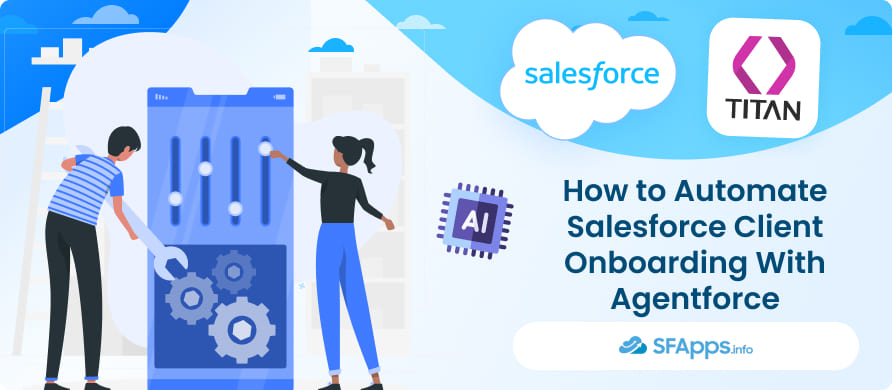
The Role of Agentforce in Salesforce Onboarding
Client onboarding in Salesforce means all the steps a company takes to welcome a new customer and get them started with your product or service. It’s a process that brings together sales, service, and support teams to make sure the customer is set up for success.
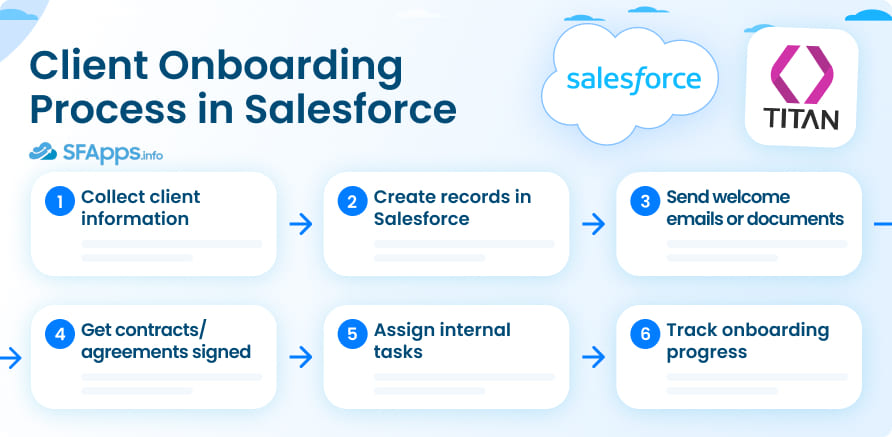
For many companies, these steps are done manually: using emails, spreadsheets, or disconnected tools. This makes the process slow and hard to manage. In such circumstances, many teams ask which Salesforce products improve customer onboarding with AI. The answer usually starts with Agentforce.
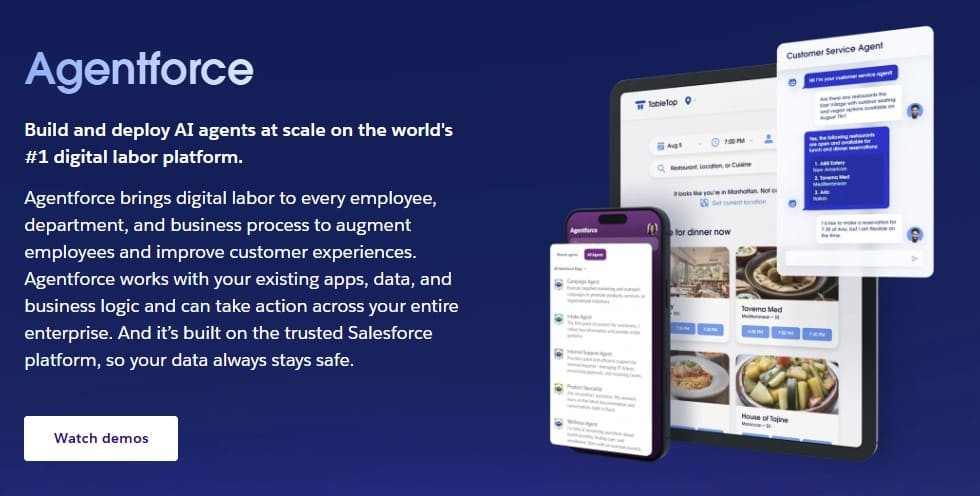
Agentforce adds an extra layer of power. For example, using the Agentforce implementation guide, you can set up digital helpers that talk to customers, answer their questions, and guide them through forms or steps. These Agents can even spot missing information or send reminders automatically.
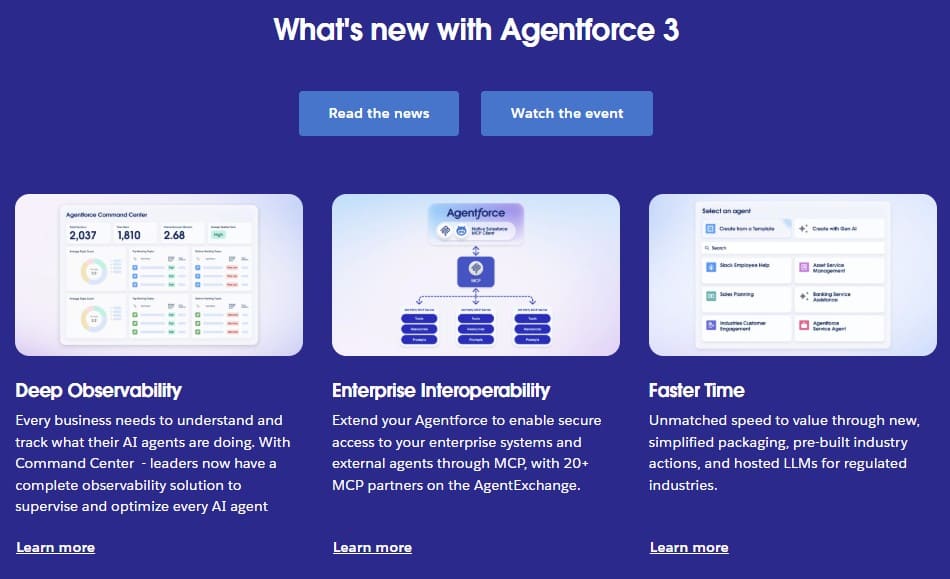
Agentforce Agents work around the clock, handle common requests, and send more complex cases to your team when needed. Because Agentforce is fully built into Salesforce, all data and actions stay in one place, which makes it easier to deliver a smooth onboarding experience.
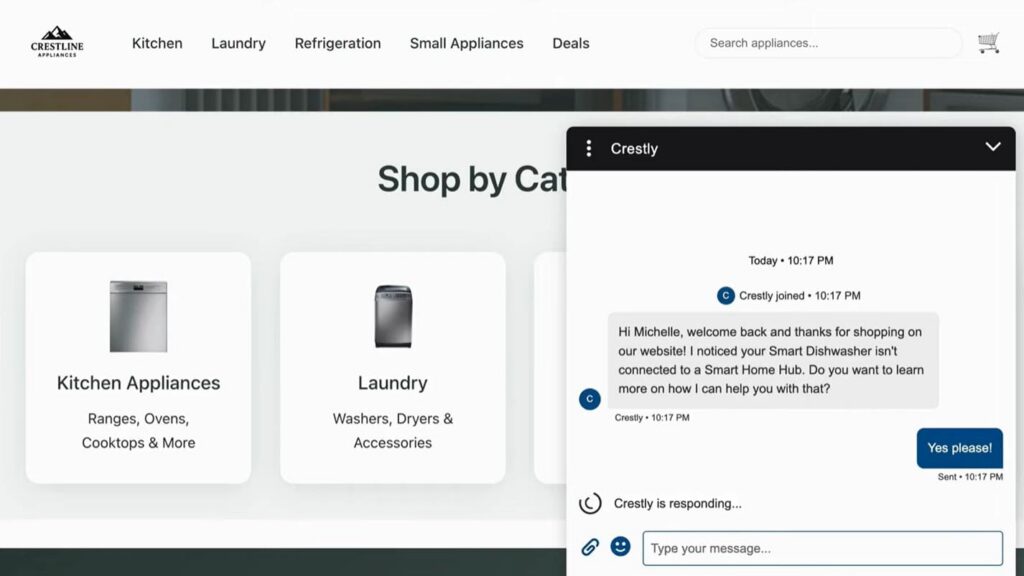
Automation with Agentforce AI onboarding solutions for Salesforce gives customers a smooth experience from the start and helps your team focus on what matters most. A well-set-up Salesforce customer onboarding process means:
- Customers get a quick, easy start. No more repeated questions or missing paperwork.
- Your team saves time and avoids mistakes.
- You can track where every customer is in their own onboarding journey.
Quick Start Guide: Enabling Agentforce for Smarter Onboarding
Installing Agentforce in Salesforce is straightforward once you know the steps. Before you start, check a few key requirements: you’ll need an Enterprise, Unlimited, or Performance edition, right admin permissions, and you might need active Service, Sales, or Data Cloud licenses, for example. To test and familiarize yourself with Agentforce, you can use Developer Edition – a free Salesforce Platform environment with Agentforce and Data Cloud. Make sure Einstein Generative AI is enabled in your org.
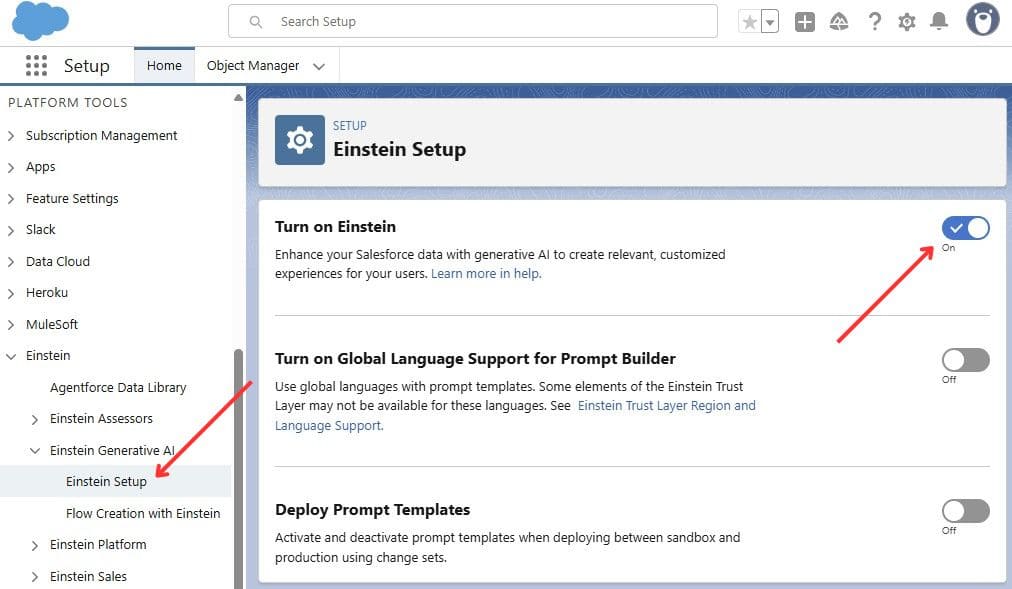
Step 1. Enable Agentforce
In Setup, type “Agentforce” into the Quick Find box and open Agentforce Agents under Agent Studio. Switch the feature on to activate it.
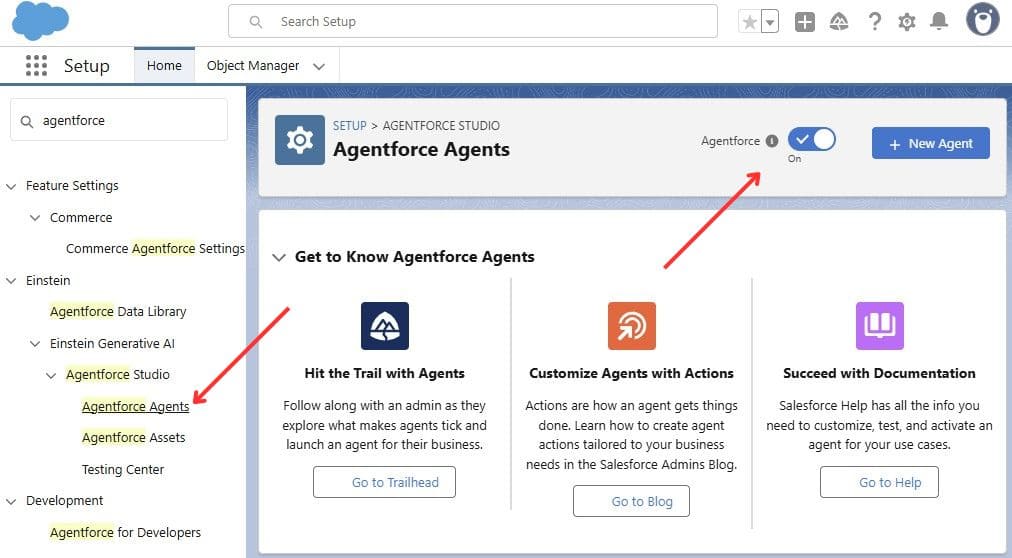
Step 2. Create Your First Agent
Click “New Agent” and choose a template such as Service Agent. Name it something clear, like “Client Onboarding Agent”, and save.

Step 3. Define Topics and Actions
Topics describe what the Agent handles, such as “New Client Onboarding”. Within each topic, you add Actions – the specific steps the Agent can perform. Actions might include sending a welcome email, creating an Account record, or triggering a Flow to collect documents.
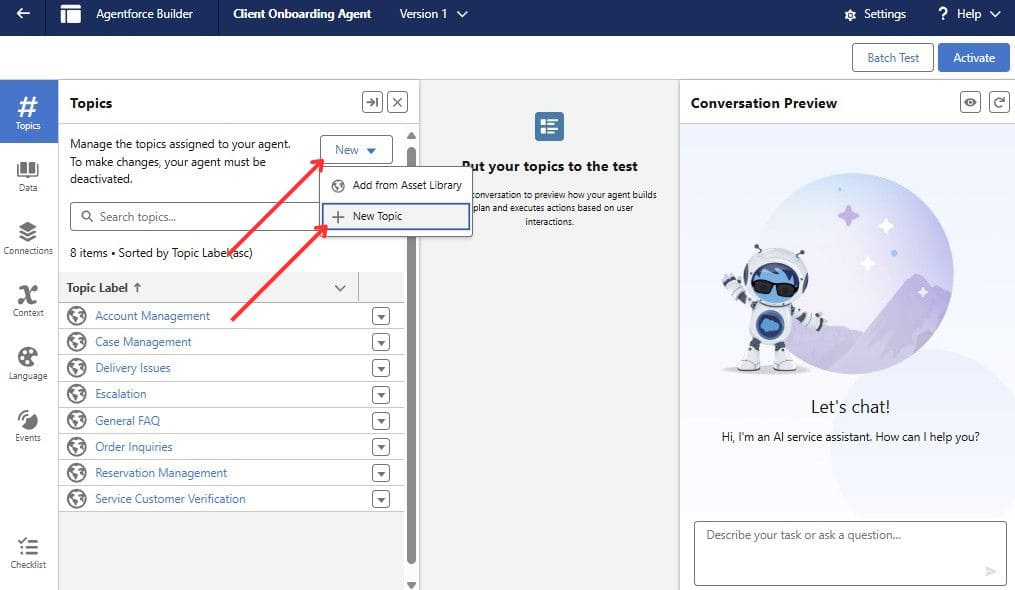
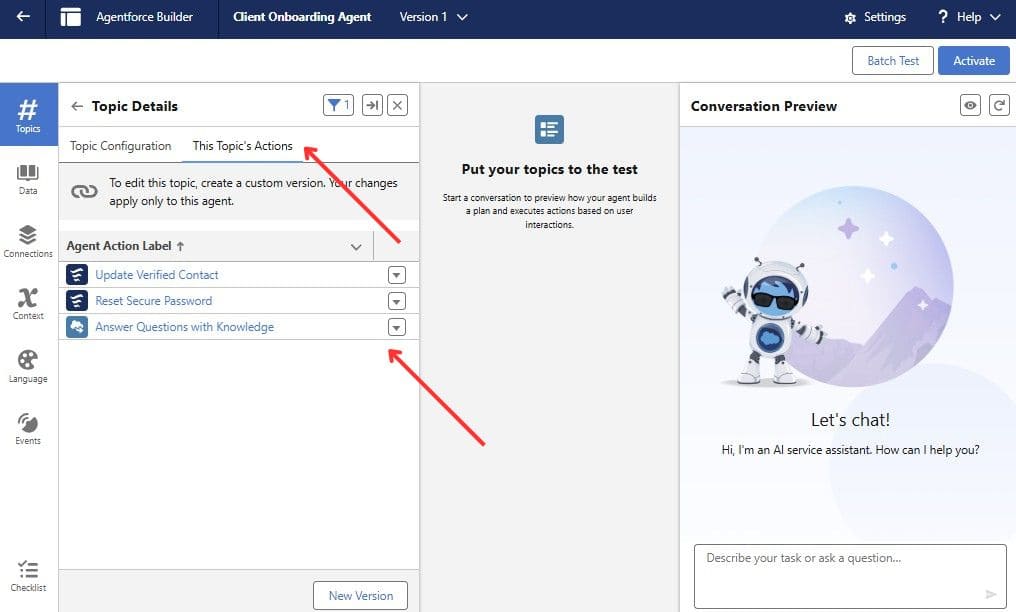
Step 4. Test Your Agent
Use the Conversation Preview tool to check responses before going live. Run sample scenarios and adjust topics or actions to make sure the Agent behaves correctly.
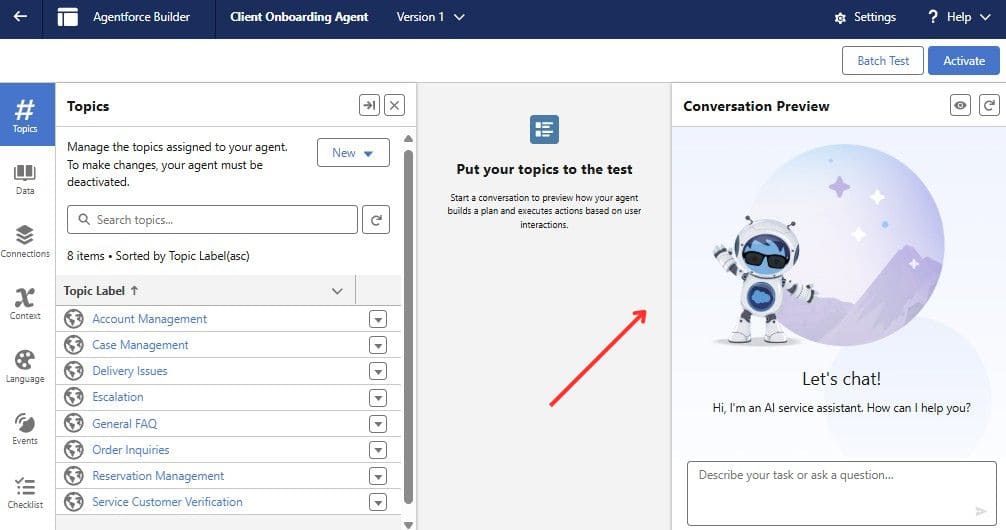
Step 5. Deploy and Monitor
When testing looks good, publish the Agent. You can embed it in the Salesforce Service Console, on your website chat, or inside a portal. After launch, you can update it over time with new topics or improved actions and track its performance in tools, such as Agentforce Command Center.
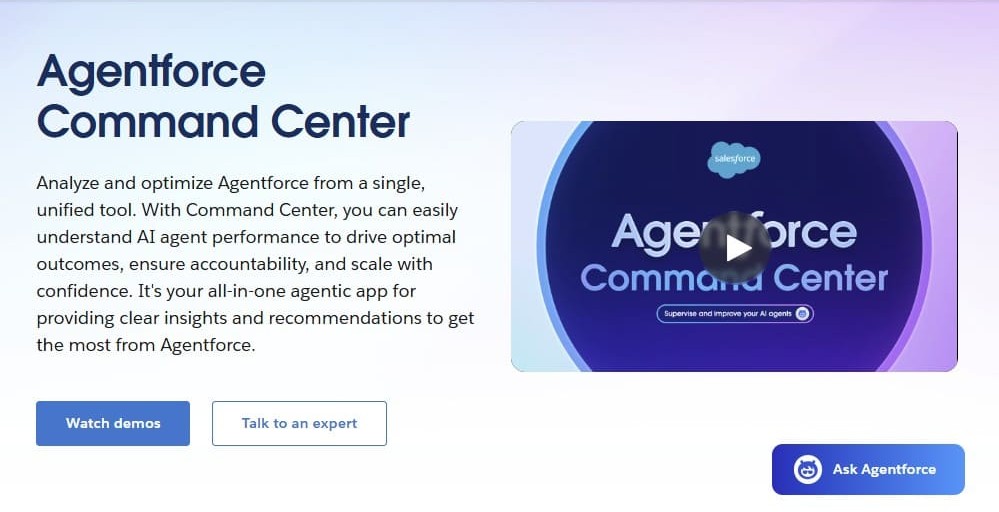
With just these steps, your Salesforce org is ready to let AI Agents handle real onboarding work. For more advanced setups, admins can also add custom fields, objects, or AI prompts in Prompt Builder to extend what the Agent can do.
However, even if you have Agentforce already set up on your Salesforce Org, it’s not enough to onboard your clients efficiently. How to do that and which tools would you need? All the answers are in the sections below.
How Titan Can Help Take Client Onboarding to the Next Level
To make onboarding truly smooth, you need everything to work together. You can go with a custom code solution, but it requires time and money, even if you have your own developer team. Moving forward with third-party solutions from AppExchange could save you time, money, and clients. Because you can purchase an already working solution. Titan apps, like Titan Forms, Docs, and Web, and Titan WEB, help companies collect information, generate documents, get signatures, and push everything straight into Salesforce, without coding or switching tools.
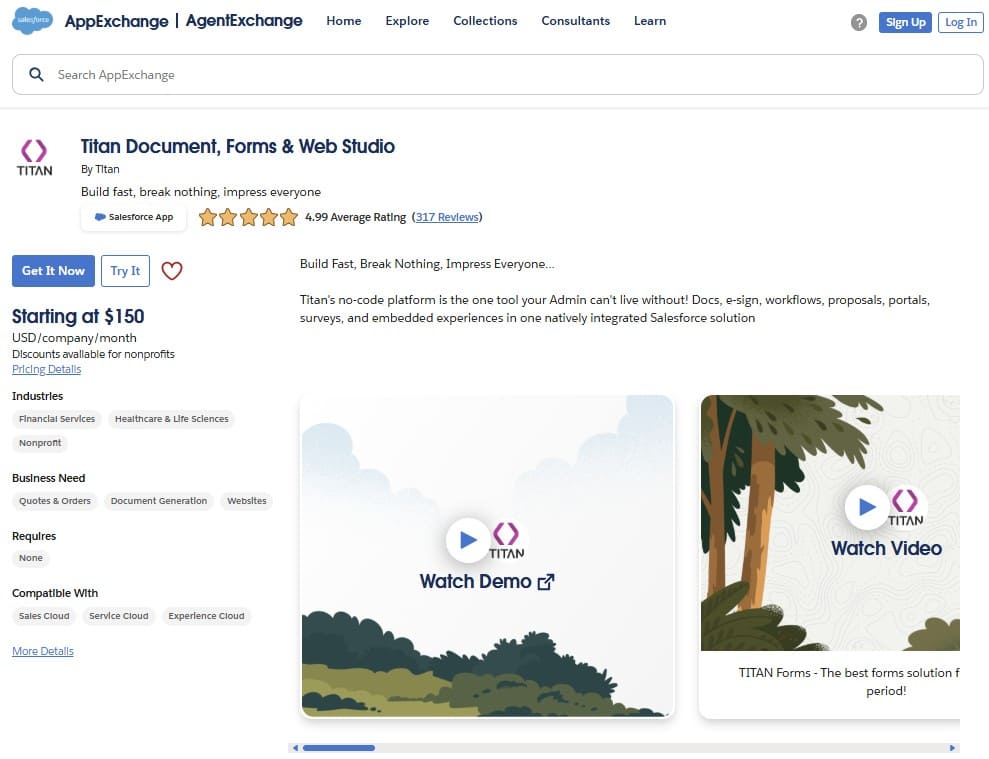
Titan is designed to take the hard work out of Salesforce onboarding. It gives companies a way to build simple, automated processes for new customers, with no coding needed. Everything works inside Salesforce, so there’s no need to copy data between systems or use several different tools.
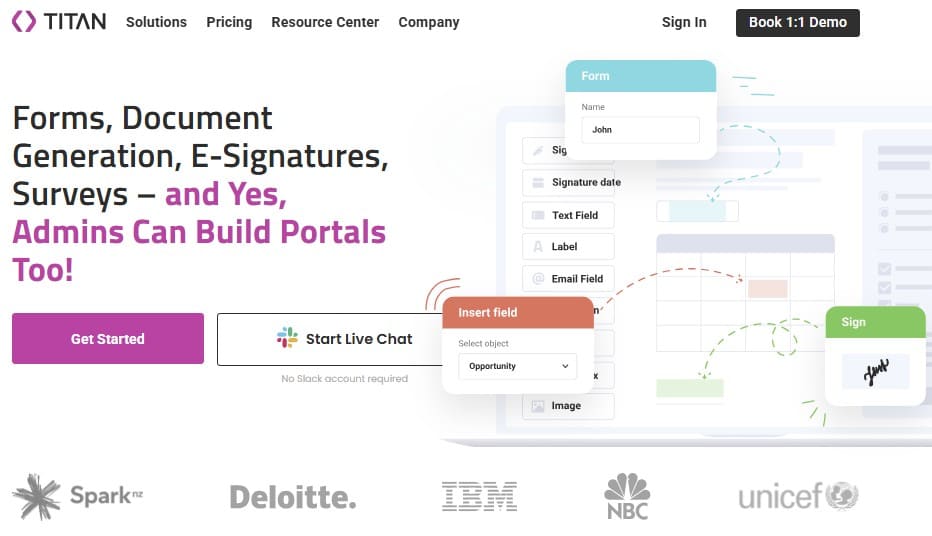
Do you need a smooth onboarding process? Titan will get you covered!
- Collect client information easily: With Titan Forms, you can create smart, branded forms that match your company’s style. Customers fill out these forms online, and their answers go straight into Salesforce, no one needs to retype anything.
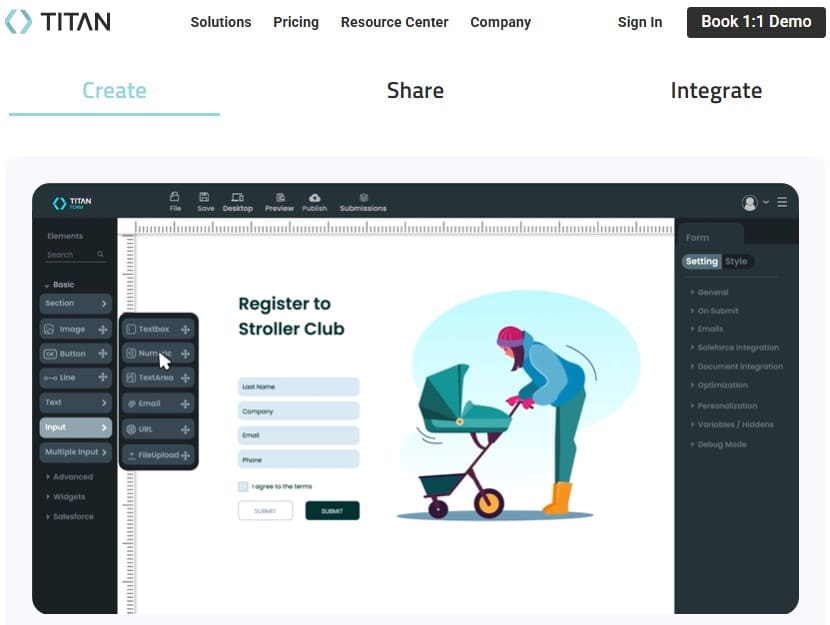
- Collect and process documents automatically: During onboarding, Titan lets you collect documents like IDs, passports, and licenses from clients. Its built-in OCR feature can extract personal details and add them as Salesforce records. With Agentforce, approvals can be cross-checked, and notifications sent to the right account owners.
- Generate and send documents: Titan Docs lets you automatically create welcome letters, contracts, or onboarding packets using customer data from Salesforce. This saves time and makes sure every document is up-to-date.
- Build a full onboarding portal: Titan Web lets you build a complete onboarding portal or branded online experience, with no coding. You can create web apps that show onboarding progress, collect information, and update Salesforce in real time. This gives customers a modern, self-service way to get started.

- E-signature and secure agreements: Titan makes it simple to add Salesforce esignature steps to your onboarding process, so customers can sign agreements online. All signed documents are saved right back to Salesforce, keeping everything in one place.
- Automate next steps: Titan can trigger follow-up emails, assign tasks, or send reminders as soon as a customer completes a form or signs a document. Your team always knows what to do next, and nothing falls through the cracks.
A Real Example: HR Onboarding Made Simple
Many HR teams use Titan to onboard new employees in Salesforce. For example, when someone gets a new job, they fill out a Titan web form with their details and upload their ID. Titan automatically creates a new employee record, generates a digital welcome packet, and sends out e-signature requests for policy agreements. HR staff can track each step and see when everything is complete, without sending any extra emails.
To see how it works in practice, check out this short video from Titan:
Agentforce and Titan Work Together for the Best Client Onboarding Experience

Titan and Agentforce can work together seamlessly. Agentforce handles the “thinking”, for example, deciding what questions to ask or when to remind a customer. Titan handles the “doing”, such as collecting answers, creating documents, and making updates in Salesforce.
Here’s how teams use Agentforce and Titan together:
- A new customer starts onboarding in a Titan web portal or form.
- Agentforce reviews the information in real time. If something is missing, it can ask the customer for more details or show the next step automatically.
- As soon as everything is filled out, Titan can generate documents, send e-signature requests, and update Salesforce records right away.
- If a customer has a question, an Agentforce Agent can answer instantly or pass the question to a real person if needed.
This combination means less manual work for your team and a faster, smarter experience for your customers. The customer onboarding Salesforce process becomes more personal, and every client gets help that fits their needs.
Why Does the Agentforce + Titan Connection Matter?
- All data is in one place: Information collected through Titan is always up-to-date in Salesforce, ready for Agentforce to use.
- No code needed: Even complex onboarding flows can be set up and managed by business users, not just IT.
- AI makes it smarter: Agentforce can spot missing information or common questions and handle them automatically.
With Titan and Agentforce for Salesforce onboarding, companies can build an onboarding journey that’s modern, error-proof, and easy to manage.
Tips for Better Salesforce Onboarding Automation

Making Salesforce onboarding run smoothly is about picking the right tools and using them in a smart way. Here are some tips that real teams have used to make onboarding faster, more accurate, and easier for everyone.
1. Keep Your Forms Simple and Clear
Only ask for information that is really needed to complete onboarding. Use smart forms, like Titan Forms, that hide or show questions based on the answers provided. This approach keeps the process short for each customer, makes forms easier to complete, and helps prevent unnecessary mistakes.
2. Connect Everything in One Place
Try to manage every part of the onboarding process inside Salesforce. When forms, documents, e-signatures, and follow-up steps are all tracked in one system, your team can see what is already done and what still needs to be completed at a glance. This avoids confusion and saves time.
3. Use Automation for Every Repeatable Step
If your team repeats the same tasks many times, such as sending reminders or creating records, set up automation. Titan can send automated emails, update records directly, or create tasks for the team. This ensures nothing is missed and customers always move forward without delays.
4. Keep an Audit Trail
Make sure every onboarding step is tracked and easy to review later. Titan and Salesforce automatically log all form submissions, signatures, and record updates. Having a complete audit trail makes it simple to answer questions, check progress, and prove compliance whenever needed.
5. Make it Easy for Customers to Self-Serve
With tools like Titan Web, give clients a portal where they can fill out forms, upload documents, and track their progress. Allowing customers to self-serve saves time for your team, reduces back-and-forth communication, and gives clients a sense of control over the process.
6. Test Your Process Before Going Live
Walk through the entire onboarding process from start to finish just as a new client would. Fix anything that feels confusing or too slow. Ask for feedback from new users and continue updating your steps. Testing ensures your process works smoothly before going live.
7. Train Your Team and Keep Improving
Make sure your team understands how the onboarding automation works and what to do if issues come up. Provide regular training sessions and update your process over time. Continuous improvements will help your team feel confident and keep onboarding efficient.
8. Focus on the Customer Experience
A fast and simple onboarding creates a strong first impression and builds trust. Every decision should make the process easier and clearer for clients. Keep the customer experience at the center, and your onboarding will deliver lasting results.
With the right tools and a little planning, Salesforce onboarding can go from being difficult to a smooth, friendly experience for everyone involved.
Final Thoughts About Salesforce Onboarding Automation

Onboarding new customers in Salesforce doesn’t have to be hard or slow. With the right approach, you can turn a messy process into a smooth, digital experience that makes customers happy and saves your team time.
The real strength of Salesforce onboarding automation comes from the partnership between Agentforce and Titan:
- Titan lets you build smart forms, create documents, collect e-signatures, and set up web portals, all connected to Salesforce and all without writing code.
- Agentforce adds AI helpers that answer questions, guide users, and check for missing information, making onboarding faster and easier for everyone.
By using these tools, companies can:
- Cut out manual steps and mistakes.
- Give every new customer a fast, simple start.
- Keep all information organized and easy to find.
Even better, you don’t need a team of developers. Titan’s no-code design means business users can create and update onboarding steps as your process changes, while Agentforce ensures the experience stays smart, automated, and responsive.
The result? A Salesforce onboarding automation flow that’s modern, reliable, and built around the customer experience. With Agentforce and Titan working side by side, you can make Salesforce client onboarding something that both your team and your customers will truly appreciate.
The post How to Automate Salesforce Client Onboarding with Agentforce first appeared on Salesforce Apps.
August 28, 2025 at 11:51PM
Click here for more details...
=============================
The original post is available in Salesforce Apps by Mykhailo Radchenko
this post has been published as it is through automation. Automation script brings all the top bloggers post under a single umbrella.
The purpose of this blog, Follow the top Salesforce bloggers and collect all blogs in a single place through automation.
============================

Post a Comment